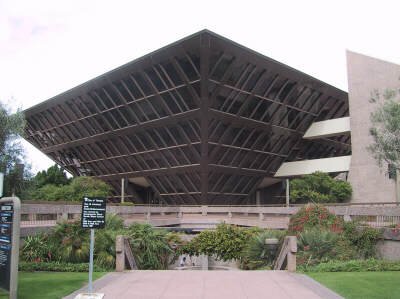You are viewing a single comment's thread from:
RE: The Truth About Power -- Seeing Past The Illusion
It's somewhat ironic that the illusion can be exposed by simply viewing the pyramid from a mathematical perspective. What would happen if you turned the pyramid upside down, so that it is standing on its point? The tip would break under the weight of the much larger portion of the pyramid above.
the city of tempe disagrees with you (tempe city hall below)

I'm not sure if you are missing the point or if this is a joke, but it's clearly not what my comment was representing. This is not a pyramid standing on its point, pressured by the weight from above. This is construction with foundation below the Earth that offer it support.
Actually, it doesn't go very far underground (no farther than a typical building.) The supports are on the side (you can see one in the pic i posted)
Initially it was just a tounge in cheek way of saying that yes, there are inverted pyramid shaped buildings. AFter reading the response though, im realizing you might not get the physics involved.
The problem with an inverted pyramid is balance, not pressure. The pressure would actually be less on the pyramid base than it would be if the same mass was distributed straight up in a rectangle shape with the same area base. because gravity just tries to move everything straight down, not down and to the center. That is to say, a 100KG 3-dimensional rectangle with a 10 ft^2 base will have more pressure on its base than a 100KG inverted pyramid with a 10 ft^2 base.
Having pressure on the base (which is supported by the ground) is a good thing. Because if the pressure is anywhere else, it causes the structure to break in the middle and fall over. For example, it the leaning tower of pisa was straightened out, there would be more pressure on the base, not less.
Either way, shear (the tendency to break in the middle and have the top fall over in a rectangle or have the overhanging higher floors fall off in an inverted pyramid) is the primary limiting constraint on the base area vs mass of a structure (which is a problem the non-inverted pyramid and also later domes/vaults/arches were created to solve)
Edit to add:
Actually, though, your analogy kind of holds. The Giza Pyramids weren't built in that shape because it was considered desirable, but because it was the only way the ancient egyptians could build something that high without it falling over on top of them.